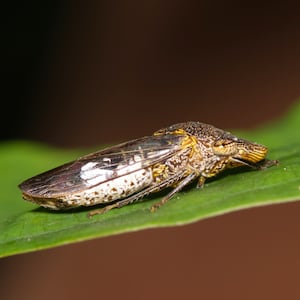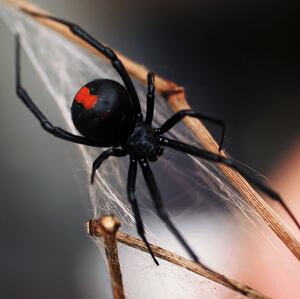If you’re looking for a pet and don’t feel like dogs and cats have enough legs to go around, there’s always the option of a pet spider—available for purchase on the web with a simple click. They’re just one option in the lucrative market of exotic animals being smuggled and sold worldwide, with greater ease these days thanks to e-commerce and social media. Even video-sharing platforms like YouTube have unwittingly played a hand in normalizing exotic pets and encouraging their trade.
Scientists, policymakers, and concerned citizens have all banded together to counter the exotic animal trade around the world. But arachnids—the family of critters that include spiders and scorpions—have fallen under people’s radar. A new paper published Thursday in the journal Nature found that while there are 1,264 arachnid species currently being traded across the globe, a staggering 79 percent of them are not being monitored by international agreements or federal databases.
Arachnids might not seem like much to us humans, but they are the apex predators of the invertebrate world and play a crucial role in the ecosystem. Poaching these animals from their natural habitats to be sold in the mass market can disturb the biodiversity and stability of the environment, and also potentially lead to outright extinction for some arachnid species—especially ones that scientists have yet to discover and could be useful to human innovation.
ADVERTISEMENT
“[It’s like an] airplane—you can take a few rivets or screws out of the wing and you might be fine. But take one too many out and the plane crashes,” John Losey, an entomologist at Cornell University who has researched the sale of illegal and endangered insects, told The Daily Beast.
The researchers behind the new study looked at arachnid trades over the last two decades through an online search of all current and historic arachnid-selling websites they could find. This search was cross referenced against the Convention on International Trade in Endangered Species of Wild Fauna and Flora (CITES) and the U.S. Fish and Wildlife Service’s Law Enforcement Management Information System (LEMIS). They learned not only which species were being trafficked, but were also able to identify the 79 percent that were not included in these databases and were being traded without any oversight.
To make matters worse, it seemed that most of the arachnids sold online were poached directly from the wild rather than farm-raised. That included nearly 77 percent of emperor scorpions, a glossy six-inch-long arachnid native to the jungles of West Africa, one million of which have been imported into the U.S. alone. Nearly 89 percent of traded Grammatola Simon 1892 tarantulas (which can grow up to nine inches in length) have come from the wild, possibly in violation of sanctions.
Arachnids are key to ensuring ecological harmony by being the predators of the invertebrate world and prey to the larger animal kingdom, Sergio Henriques, a conservation biologist at the Indianapolis Zoo's Global Center for Species Survival, told The Daily Beast. “What we’ve noticed is that those ecosystems that lose their predator or lose that population, that does have a knock-on impact. The animals that the spider or tarantula was eating, their numbers increase, which impacts plants and actually the landscape. If you remove spiders at the level we’re doing, it impacts the landscape and the way vegetation, plants, and animals engage in ecosystems.”
Henriques, who co-chairs the Spider and Scorpion Specialist Group at the International Union for Conservation of Nature Species Survival Commission (IUCN), an organization that assesses measures needed to safeguard a species, said there have been efforts to get arachnids better protections and recognition, but progress has been slow. Of the over one million known invertebrates regulated by IUCN’s CITES, under 1 percent have been assessed by the organization. He and Losey said a significant reason underlying the lag is manpower: There aren’t enough trained arachnologists or efforts in the field to find all the arachnids on our planet (of which there are countless species yet to be discovered) before they’re traded, not to mention categorize and advocate for their conservation.
Aside from an underpowered scientific effort, what also makes arachnids particularly vulnerable to trafficking is how easy it is to smuggle them. Because they don’t have bones, arachnids don’t trip up conventional detection methods used at airports or seaports.
These animals and their smugglers are often caught red-handed by U.S. customs officials and border patrol, Floyd Shockley, a collections manager at the Smithsonian’s National Museum of Natural History, told The Daily Beast. But there is the risk a trafficked arachnid might escape and pose an ecological threat by wreaking havoc on the local animal and plant life. Nothing like that has happened yet—but the lack of data means authorities are contending with blind spots everywhere.
“We don’t know much about the population structure, the population numbers, we don’t know enough about the interactions of these arachnids and arthropods in most terrestrial ecosystems even to get those answers,” Paula Cushing, an arachnologist at the Denver Museum of Nature and Science, told The Daily Beast.
The new study arrives just as the exotic pet trade has swelled to astronomical heights. Henriques said he hopes the findings will motivate people interested in arachnids—whether the casual pet owner or diehard hobbyist—to educate themselves about where the animal came from, whether it was ethically sourced, and the future of arachnids on our planet.
“There’s a lot of potential we are losing that we might never get back,” he said. “Losing the species of a spider or many other animals is like burning the book in the library you haven’t yet read. The potential is immense and we don’t know what we’re losing. But I can assure you know, we’re not benefitting.”







